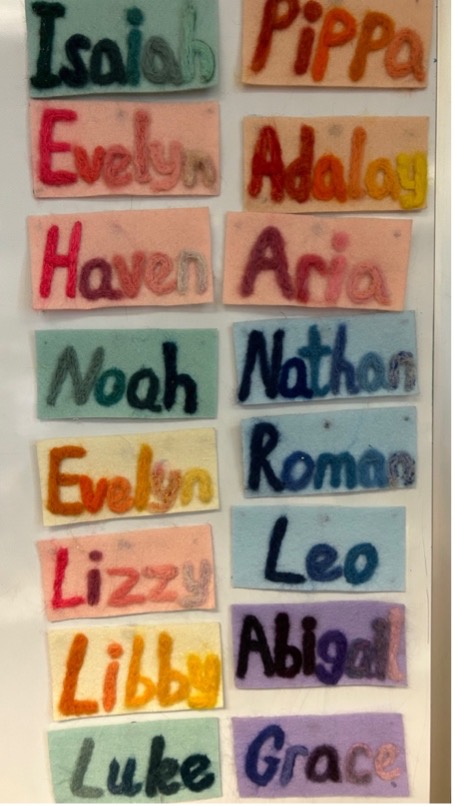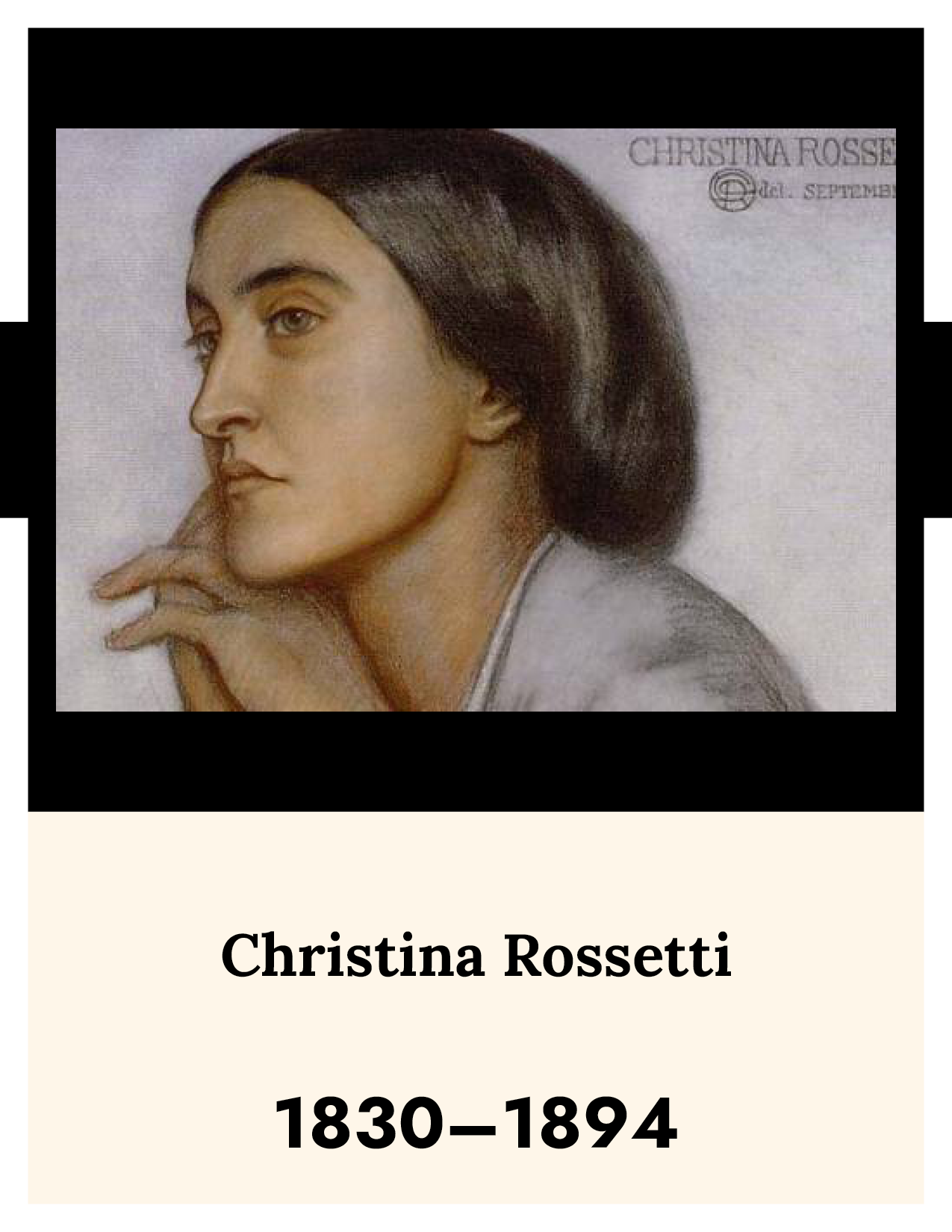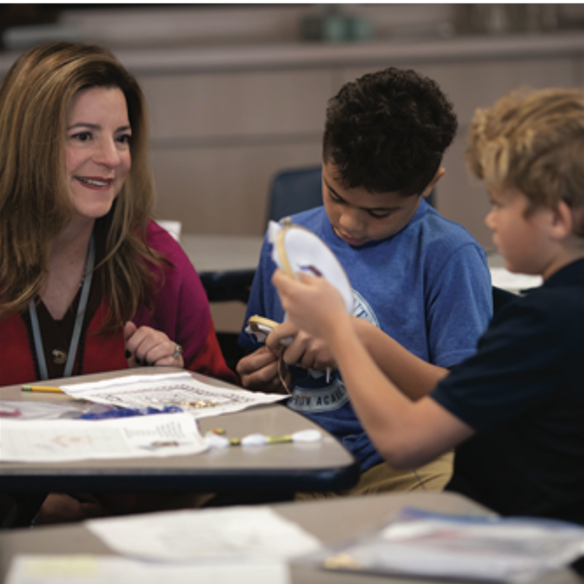Ambleside Schools International Articles

Image courtesy of The Augustine Academy an Ambleside Member School.
Browse more Ambleside Schools International Resources.
Video Series Part 2. How is the Student Growing?
The Mind of a School-Child1
At Ambleside Schools we wholeheartedly agree with Charlotte Mason’s premise that children are born with an innate desire to know. They’re “pre-wired,” so to speak, to naturally learn and grow — to “self-educate.” When we consider our role in a child’s education and the forming of their mind and spirit, our approach and method must always be with a growth mindset, without manipulation. Three instruments are available to the educator who is committed to help students grow in this way. Once again, won’t you join us as we share more of Charlotte Mason’s insights and ‘The Ambleside Difference’ in Part II of our video series. Invite a friend and spread the word! And make sure to use our study guides as you watch and listen.
But we must leave the quite young child, fascinating as he is, and take him up again when he is ready for lessons. I have made some attempt elsewhere to show what his parents and teachers owe to him in those years in which he is engaged in self- education, taking his lessons from everything he sees and hears, and strengthening his powers by everything he does. (Mason referring to her outline of pre and early school education in her first volume.) Here, in a volume which is chiefly concerned with education in the sense of (formal) schooling, I am anxious to bring before teachers the fact that a child comes into their hands with a mind of amazing potentialities: he has a brain too, no doubt, the organ and instrument of that same mind, as a piano is not music but the instrument of music. Probably we need not concern ourselves about the brain which is subject to the same conditions as the rest of the material body, is fed with the body’s food, rests, as the body rests, requires fresh air and wholesome exercise to keep it in health, but depends upon the mind for its proper activities.
The world has concerned itself of late so much with psychology, whose province is what has been called ‘the unconscious mind,’ a region under the sway of nerves and blood (which it is best perhaps to let alone) that in our educational efforts we tend to ignore the mind and address ourselves to this region of symptoms. Now mind, being spiritual, knows no fatigue; brain, too, duly nourished with the food proper for the body, allowed due conditions of fresh air and rest, should not know fatigue; given these two conditions, we have a glorious field of educational possibilities; but it rests with us to evolve a theory and practice which afford due recognition to mind. An authoritative saying which we are apt to associate with the religious life only is equally applicable to education. That which is born of the flesh, is flesh, we are told; but we have forgotten this great principle in our efforts at schooling children. We give them a ‘play way’ and play is altogether necessary and desirable but is not the avenue which leads to mind. We give them a fitting environment, which is again altogether desirable and, again, is not the way to mind. We teach them beautiful motion and we do well, for the body too must have its education; but we are not safe if we take these by-paths as approaches to mind. It is still true that that which is born of the spirit, is spirit. The way to mind is a quite direct way. Mind must come into contact with mind through the medium of ideas. “What is mind?” says the old conundrum, and the answer still is “No matter.” It is necessary for us who teach to realize that things material have little effect upon mind, because there are still among us schools in which the work is altogether material and technical, whether the teaching is given by means of bars of wood or more scientific apparatus. The mistress of an Elementary School writes,––”The father of one of my girls said to me yesterday, ‘You have given me some work to do. E. has let me have no rest until I promised to set up my microscope and get pond water to look for monads and other wonders.'” Here we have the right order. That which was born of the spirit, the idea, came first and demanded to confirm and illustrate. “How can these things be?” we ask, and the answer is not evident.
Education, like faith, is the evidence of things not seen. We must begin with the notion that the business of the body is to grow; and it grows upon food, which food is composed of living cells, each a perfect life in itself. In like manner, though all analogies are misleading and inadequate, the only fit sustenance for the mind is ideas, and an idea too, like the single cell of cellular tissue, appears to go through the stages and functions of a life. We receive it with appetite and some stir of interest. It appears to feed in a curious way. We hear of a new patent cure for the mind or the body, of the new thought of some poet, the new notion of a school of painters; we take in, accept, the idea and for days after every book we read, every person we talk with brings food to the newly entertained notion. ‘Not proven,’ will be the verdict of the casual reader; but if he watch the behavior of his own mind towards any of the ideas ‘in the air,’ he will find that some such process as I have described takes place; and this process must be considered carefully in the education of children. We may not take things casually as we have done. Our business is to give children the great ideas of life, of religion, history, science; but it is the ideas we must give, clothed upon with facts as they occur, and must leave the child to deal with these as he chooses.
How many teachers know that children require no pictures excepting the pictures of great artists, which have quite another function than that of illustration? They see for themselves in their own minds a far more glorious, and indeed more accurate, presentation than we can afford in our miserable daubs. They read between the lines and put in all the author has left out. A child of nine, who had been reading Lang’s Tales Of Troy and Greece, drew Ulysses on the Isle of Calypso cutting down trees to make a raft; a child of ten, reveling in A Midsummer Night’s Dream, drew that Indian Princess bringing her lovely boy to Titania. We others are content to know that Ulysses built a raft, that the boy was the child of an Indian Princess. This is how any child’s mind works, and our concern is not to starve these fertile intelligences. They must have food in great abundance and variety. They know what to do with it well enough and we need not disturb ourselves to provide for the separate exercise of each so-called ‘faculty’ (a singular power of the mind, such as memory, reason, or speech); for the mind is one and works all together; reason, imagination, reflection, judgment, what you please, are like ‘all hands’ summoned by the ‘heave-ho!’ of the boatswain. All swarm on deck for the lading of cargo, that rich and odorous cargo of ideas which the fair vessel of a child’s mind is waiting to receive. Do we wish every child in a class to say,––or, if he does not say, to feel,––”I was enlarged wonderfully” by a Geography lesson? Let him see the place with the eyes of those who have seen or conceived it; your barographs, thermographs, contour lines, relief models, sections, profiles and the like, will not do it. A map of the world must be a panorama to a child of pictures so entrancing that he would rather ponder them than go out to play; and nothing is more easy than to give him this joy of living. Let him see the world as we ourselves choose to see it when we travel; its cities and peoples, its mountains and rivers, and he will go away from his lesson with the piece of the world he has read about, be it county or country, sea or shore, as that of “a new room prepared for him, so much will he be magnified and delighted in it.” All the world is in truth the child’s possession, prepared for him, and if we keep him out of his rights by our technical, commercial, even historical, geography, any sort of geography, in fact, made to illustrate our theories, we are guilty of fraudulent practices. What he wants is the world and every bit, piece by piece, each bit a key to the rest. He reads of the [tidal] Bore of the Severn [River] and is on speaking terms with a ‘Bore’ wherever it occurs. He need not see a mountain to know a mountain. He sees all that is described to him with a vividness of which we know nothing just as if there had been “no other way to those places but in spirit only.” Who can take the measure of a child? The Genie of the Arabian tale is nothing to him. He, too, may be let out of his bottle and fill the world. But woe to us if we keep him corked up.
Enough, that the children have minds, and every man’s mind is his means of living; but it is a great deal more. Working men will have leisure in the future and how this leisure is to be employed is a question much discussed. Now, no one can employ leisure fitly whose mind is not brought into active play every day; the small affairs of a man’s own life supply no intellectual food and but small and monotonous intellectual exercise. Science, history, philosophy, literature, must no longer be the luxuries of the ‘educated’ classes; all classes must be educated and sit down to these things of the mind as they do to their daily bread. History must afford its pageants, science its wonders, literature its intimacies, philosophy its speculations, religion its assurances to every man, and his education must have prepared him for wanderings in these realms of gold.
How do we prepare a child, again, to use the aesthetic sense with which he appears to come provided? His education should furnish him with whole galleries of mental pictures, pictures by great artists old and new;––Israels’ Pancake Woman, his Children by the Sea; Millet’s Feeding the Birds, First Steps, Angelus; Rembrandt’s Night Watch, The Supper at Emmaus; Velasquez’s Surrender of Breda,––in fact, every child should leave school with at least a couple of hundred pictures by great masters hanging permanently in the halls of his imagination, to say nothing of great buildings, sculpture, beauty of form and color in things he see. Perhaps we might secure at least a hundred lovely landscapes too, ––sunsets, cloudscapes, starlight nights. At any rate he should go forth well furnished because imagination has the property of magical expansion, the more it holds the more it will hold.
It is not only a child’s intellect but his heart that comes to us thoroughly furnished. Can any of us love like a little child? Father and mother, sisters and brothers, neighbors and friends, “our” cat and “our” dog, the wretchedest old stump of a broken toy, all come in for his lavish tenderness. How generous and grateful he is, how kind and simple, how pitiful and how full of benevolence in the strict sense of goodwill, how loyal and humble, how fair and just! His conscience is on the alert. Is a tale true? Is a person good? ––these are the important questions. His conscience chides him when he is naughty, and by degrees as he is trained, his will comes to his aid and he learns to order his life. He is taught to say his prayers, and we elders hardly realize how real his prayers are to a child.
Questions and Thoughts to Consider:
- Describe what growth looks like in a child?
- How has education ignored mind and moved to symptoms? Why?
- Reflect upon your own education, how was mind cultivated? How was it not cultivated?
- What are the kinds of things Mason is describing as “food for the mind”?
- How can schooling be a “play-way”, “a fitting environment”, or “beautiful motion”? Does this feed the mind?
- Describe a growth mindset?
- When is mind ignored and why?
- How can we cultivate a home that nurtures mind? What are the challenges before us?
1 Charlotte Mason, A Philosophy of Education, Chapter 2.



